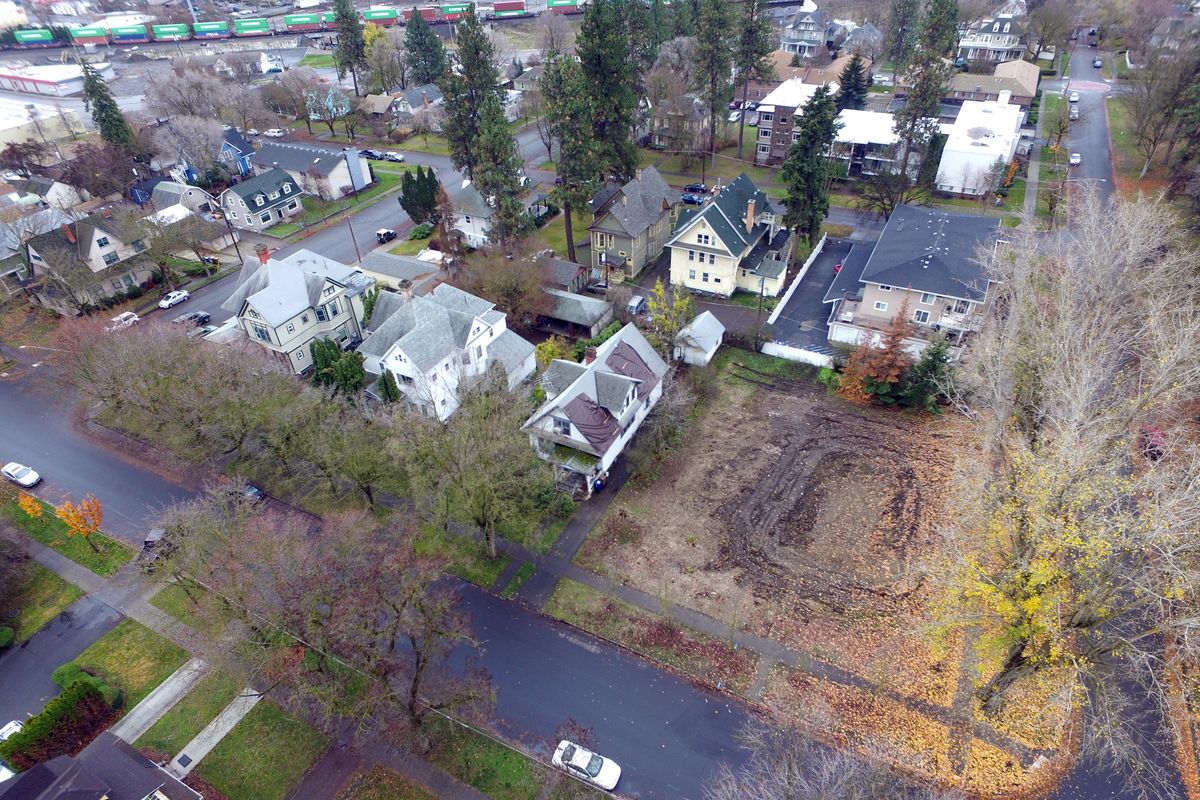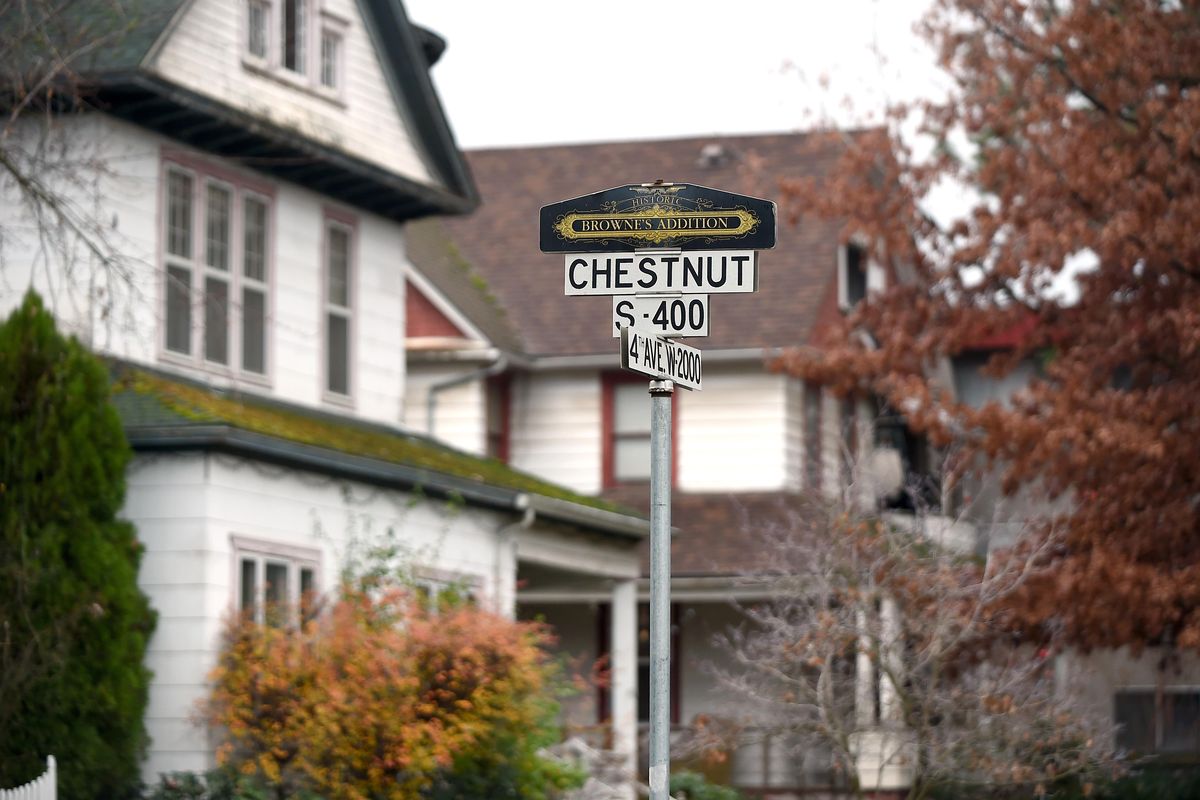This column reflects the opinion of the writer. Learn about the differences between a news story and an opinion column.
Shawn Vestal: Councilwoman looking to protect historic buildings, neighborhoods
FILE – Second Avenue and Chestnut Street in Browne’s Addition. (Jesse Tinsley / The Spokesman-Review)Buy a print of this photo
A gleaming new apartment building sits at Third Avenue and Coeur d’Alene Street.
In brick and blue siding, it fills the lot at the western edge of Browne’s Addition, overlooking Latah Creek. It’s sleek, modular, modern – attractive, but not much like the rest of the neighborhood or the two homes it replaced, both of which were built in the 1890s.
It’s one of several recent developments in the neighborhood that have prompted residents and city officials to seek changes that would give them more say in the demolition and design process, and to seek tax breaks and other incentives for historic preservation.
The City Council is considering revisions to the Historic Preservation and Demolition Ordinance that would allow neighborhoods to designate themselves through a vote as historic districts and develop design standards for those districts, giving neighbors more of a chance to weigh in. It would also give more authority to city officials to reject demolition and replacement proposals for historic properties, though supporters are emphasizing incentives to preservation and collaboration with property owners.
“My approach is carrot rather than stick,” said Lori Kinnear, the Spokane city councilwoman proposing the revisions.
There would be a bit of stick involved, though. As it stands now, the city has no authority to reject or substantially review the demolition of structures on either the national or city historic registries.
“Under our current demolition ordinance, Patsy Clark’s or the Campbell House could be torn down,” Kinnear said.
As the pace of development in the city has sped up – and particularly as several projects in Browne’s Addition have replaced 100-year-old homes with modular new apartment buildings that fill the lots to the edges – the City Council has moved to reconsider regulations on historic properties, starting with a moratorium on demolition permits in Browne’s that remains in effect.
Representatives of builders and property owners say they’re concerned about adding new regulations or fees at a time when the city has an affordable housing crisis and is trying to encourage denser development in the city, as opposed to sprawl. Kinnear said she has tried to find a balance between property rights and protecting the historical fabric of Spokane, and that the proposal works well alongside efforts to promote “in-fill” development.
“It’s about the character of our city,” she said. “We are so fortunate to have a large stock of historic properties here. We treasure them. We want to make sure they are preserved.”
From neighborhoods full of Craftsmans to neighborhoods full of Victorians, from the Davenport Hotel to the Ridpath, Spokane is packed with historic homes and buildings. Many of them are on both the National Register of Historic Places and the Spokane Register of Historic Places. There are 19 Spokane historic districts designated as districts on the national registry, which is simply honorary.
More than 350 properties are listed on the city’s register of historic places. In those cases, property owners and the city officials have come to an agreement that the buildings will be preserved and set limits on future developments.
A key change in Kinnear’s proposal would make it possible for neighborhoods to decide to designate themselves as historic districts and to draw up enforceable design standards for all properties in a district. It would require a vote of residents and have an appeals process for those who object.
The city has received a federal grant to proceed with a pilot program of sorts in Browne’s Addition, with neighbors working toward the possible creation of a local district outside of the proposed changes to the ordinance. Browne’s Addition has been a focus for the issue for several reasons. It’s filled with historic structures from the turn of the 20th century – Victorian mansions built for the city’s wealthy – and many of them have been turned into apartments.
The demolition of older properties there has been rapid in recent years. Several of those projects have been unpopular – or at least a source of concern – with some neighbors, who say they want to see the historic character of Browne’s Addition preserved.
“People often say, ‘Where is the historic preservation office? Why aren’t they stopping this?’ ” said Megan Duvall, Spokane’s historic preservation officer. “The reality is we don’t have the power to stop it.”
The proposed regulations would change the way demolition and replacement of historic structures is permitted, creating a longer process with more opportunity for public input and review by the city Historic Landmarks Commission. It also would allow the commission to reject an application for a “certificate of appropriateness” – which is required to demolish, move or alter the exterior appearance of a historic landmark or a “contributing property” in a historic district – and thus a demolition permit.
Kinnear said property owners could appeal a denial of the permit to the city hearing examiner, and then to the courts. She and Duvall both said the goal was to collaborate with property owners, to offer alternatives to demolition, to inform them of the incentives for preservation, and to establish standards for projects that replace historic properties – not to control designs rigidly.
“Our intent is not to design properties for people,” Duvall said.
Arthur Whitten, government affairs director for the Spokane Home Builders Association, said his group’s members have concerns about a couple of proposed changes, including an increase in demolition permitting fees.
Original proposals involved raising the fees on demolition permits from under $100 to $3,000, with funds directed toward a historic preservation fund. That proposed fee has been dropped to $500, but he said it’s still a concern in terms of trying to promote development and affordable housing in the city.
Kinnear has already been working with stakeholders and revising the proposal in response to feedback. The ordinance will come before the Plan Commission for hearings in November, with a City Council vote expected in December.
“It’s an evolving process,” she said.


